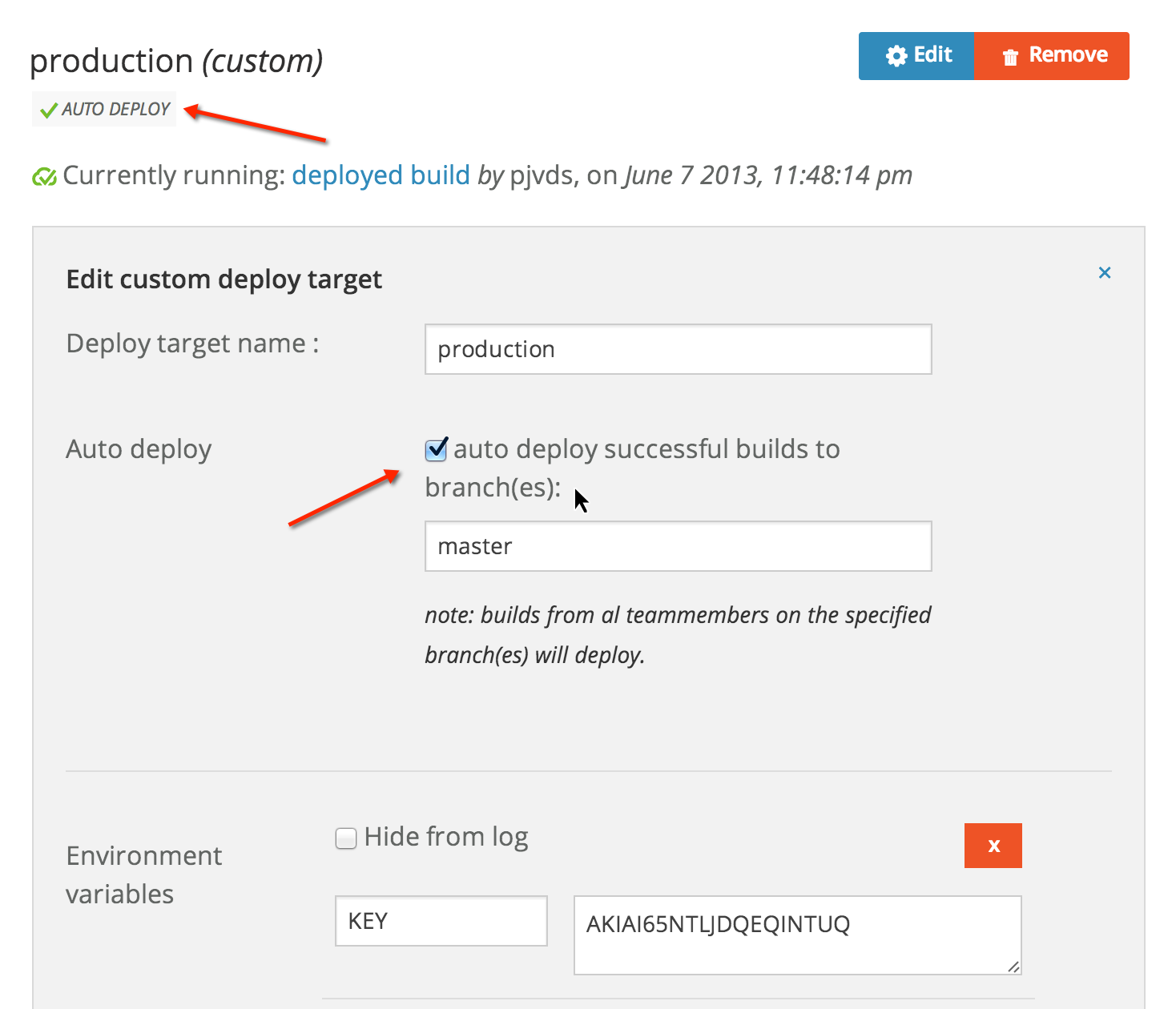In a previous blogpost I described how I leverage wercker to automate the publishing and deployment process for this jekyll blog. Since then I have fixed typo's from my iPhone, used Prose for editing and introduced a staging area for my blog. The staging area helps me to review my posts in their final form, before I promote them production. You can expect a blogpost with the details somewhere soonish. In this post I want to share that wercker introduced auto-deploy and how enabling this feature changed the way I blog.
Auto deployment
Auto deployment allows you to flow your changes to production. It stimulates to break work into smaller predictable changes and therefor limits the risk of deployment. Before a change set flows to production it gets challenged by an automated build. The goals of the build is not only to transform the source code to a deployable form, but also to challenge its quality. This process allows teams to be more agile and it makes them more aware to spend time on the quality checks in the build.
Enabling auto deploy on wercker
A blog is a safe way to experiment with auto deployment. So I decided to enable it for both of my deployment targets, staging and production. Here is how my production deployment target looks like at wercker:

I enabled auto deploy for this target by checking the auto deploy checkbox. I configured it to only deploy successful builds from the master branch. All deployment targets that have auto deploy enabled show the auto deploy icon as you can see just below the deployment target name.
As described in a previous post, Wercker builds my website with every push to the Github repository. With the auto deploy feature enabled it will also deploy the build under the following conditions:
- The build is successful (green), which means that jekyll generated the site successfully.
- The build is from a branch that matches the auto deploy branch-list, in my case master.
How did this change my workflow
Before I enabled the auto deploy feature I was committing all my changes directly to the master branch. The two biggest downside of this are that finished and unfinished work are not separated and that the history of the master branch isn't really helpful. It contains to much details and one commit could be related to a post, the next to some improvements of a Jekyll plugin while the one before relates to some improvements in the template.
Now with auto deploy enabled I cannot work directly on the master branch anymore, because then I would deploy a bit too often. To have more control on what gets deployed and what not I decided to move to the feature branching model. This branching model allows me to work in an isolated branch until the work is complete.
Here is how I created this post. Before I started writing it, I created a branch called auto-deploy-jekyll. All the work got committed to that branch. These commits formed an audit trail that holds the exact path from the blank to the final state of the post. It contains not only textual changes but also the reasons behind important decisions. For example why I dropped a certain example or why I picked another screenshot. This is helpful for my future self and co-authors. It helps me to pick up where I left, especially when I do not work on a post for a couple of weeks.
After the is post is finished I merged it to the master branch and push the changes to Github. This push triggered a build at wercker and because the build was successful it it got auto deployed to production.
Advantages
- Auto deploy forced me to isolate my work in to smaller branches that gave better focus.
- The feature branches contain the full path to the final state of my work.
- The feature branching model gave the master branch cleaner history.
- Detailed history can be viewed in feature branches.
- Higher level history can be viewed in the master branch.
- The feature branches allow me to see the history of a certain paths. This is a big improvement over the history I had when I was committing directly to the master branch.
- Master only contains production ready work.
- Deployment gets as simple as a merge to master.